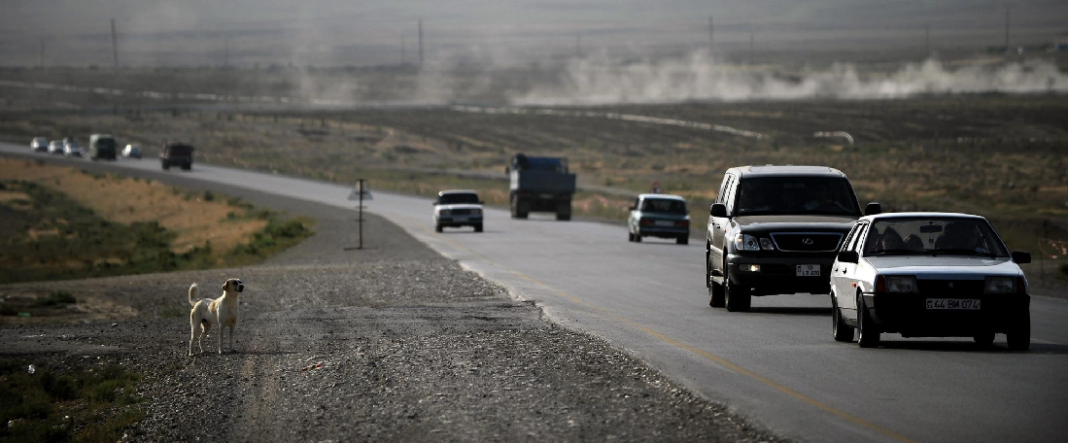Three Steps to Safer Roads in Europe and Central Asia
Road crashes happen in an instant but can leave long-lasting consequences. This global issue incurs high human and financial costs, with approximately 1.35 million people killed and 50 million seriously injured in road crashes each year. In the Europe and Central Asia (ECA) region, the average fatality rate for road crashes is 14.4 per 100,000 people, nearly three times higher than the European Union’s average of 5.1, according to the World Health Organization.
Road crash injuries strain public health systems and cost low- and middle-income countries between 2-6% of their gross domestic product. Most fatalities occur in these countries, including those in ECA. Without a concerted effort, the number of road traffic deaths and serious injuries will continue to rise in the region as the number of cars and trucks increases.
A Roadmap to Safer Travel
Many countries and cities worldwide are taking decisive action to address the global road safety crisis, and evidence shows that these efforts are effective. For the vast and diverse ECA region, which spans from Eastern Europe and the Western Balkans to the South Caucasus and Central Asia, the key to safer roads lies in identifying specific road safety risks in each country.
These risks can vary across subnational regions, cities, and localities, but some universal good practices and actions apply to the entire region. Here are three critical steps:
Data-Driven Decisions: The first step is making informed road safety decisions based on high-quality data. Collecting and analyzing data to identify where severe crashes occur and who is involved should be the starting point. Good data allows authorities to pinpoint high-risk locations and factors that need immediate attention.
Evidence-Based Policies and Interventions: Road safety policies and interventions must be rooted in evidence. Key measures from successful road safety programs worldwide include managing speeds, providing safe pedestrian infrastructure, and requiring motorcyclists to use helmets. Countries in the ECA region can leverage extensive evidence on the effectiveness of various road safety interventions.
Adequate Speed Limits: Setting appropriate speed limits is crucial. On roads with high interactions between pedestrians and motorized traffic, reducing speed limits to 30 km/h can save lives and prevent injuries, with only a minimal impact on journey times.
Effective Road Safety Delivery
To tackle the complex and multidimensional nature of road safety challenges, policymakers must ensure that road safety professionals are well-trained and adequately resourced. The World Bank, in partnership with others, is working with government counterparts to scale up road safety programs in the region. We are providing financing, expertise, and data-driven strategy development, focusing on interventions that have proven effective in other countries.
Accelerating Road Safety Improvements
In Serbia, the World Bank has been engaged in road safety projects for over a decade, assisting with institutional reforms, strategy development, and open database development. Innovations like the “Safe2School“ mobile app have contributed to reducing Serbia’s road fatality rate from 9.05 to 7 per 100,000 people between 2010 and 2021. However, more work is needed to meet the UN Sustainable Development Goal target of halving road traffic fatalities.
To accelerate improvements across the region, the World Bank, in collaboration with the European Commission, supports the Eastern Partnership Transport Panel. This initiative facilitates the exchange of information and road safety best practices among Armenia, Azerbaijan, Georgia, Moldova, and Ukraine, aiming to identify common challenges, share lessons learned, and work towards long-term goals.
In Tajikistan, where road crashes are the leading cause of death for those aged 5 to 29, investing $0.36 billion in safer road infrastructure could yield an economic benefit of $1.79 billion and save 681 lives annually. Supported by the Global Road Safety Facility, a multi-donor fund hosted by the World Bank, efforts are focused on safer roadside infrastructure in high-risk areas, promoting seatbelt use, and developing a long-term road safety strategy based on sound data.
There are significant opportunities for safety enhancements in other parts of the region, including Kazakhstan, Montenegro, and North Macedonia. In each case, the goal is to promote evidence-based actions to prevent road traffic deaths and injuries.
Governments Can Drive Positive Change
Road safety interventions often fail due to a lack of funding, know-how, implementation capacity, and political commitment. However, in the ECA region, these obstacles can be overcome with the World Bank’s support in providing funding and technical assistance. Road crash fatalities and injuries are preventable, but governments need to be proactive and strengthen their commitments. The lives of their citizens depend on it.


